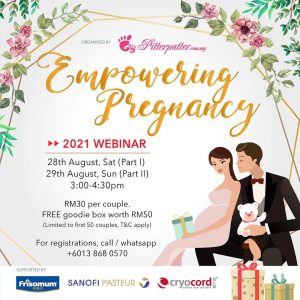Recovery after a Vaginal Delivery
What should I expect after a vaginal birth?
- After delivery at the hospital, the doctors and nurses will continue to monitor your blood pressure, heart rate and vaginal bleeding (lochia)
- You may feel unusually tired which is normal after delivery. Take a lot of rest and you could start your normal diet soon.
- The nurses may ask you to start ambulating as soon as you are ready. But take time to sit up in bed first or sit on a chair. If you do not feel dizzy, you could slowly stand up and walk. Ask your husband or nurse to accompany you first when you need to go initially to the toilet as you may feel dizzy and faint.
- Vaginal bleeding (lochia) will continue for the next several weeks. It will be heavy like your menses and occasionally you may see small blood clots passed out. Do not use tampon, use sanitary pad instead. The colour of the lochia will change from red, to pink then brown and yellow.
- Abdominal pain and cramping is normal as your uterus will be contracting to get back to its original size. In addition, you may feel pain at your perineum due to the episiotomy or laceration during vaginal delivery. You will be given some pain killers to help reduce the pain. Please let your doctor and nurses know if you are allergic to any pain killers.
- Your breasts will feel engorged and swollen. You will be taught how to breast feed your baby prior to going home. You need to learn the right way of breast feeding your baby and taking care of your breasts to prevent risk of breast and nipple infection.
- You will need to take care of your perineal area. You will be given some stool softeners e.g lactulose to prevent you from having constipation.
- Prior to discharge from the hospital, your doctor will counsel you on the appropriate contraception and book and appointment 6 weeks after delivery.
- Returning back to your usual activities: Try to limit climbing stair 1 – 2 times / day, avoid lifting anything heavier than your baby, get help with house hold chores, avoid driving at least 2 weeks after delivery.
When should I contact my doctor after a vaginal birth?
- If you have a fever
- You notice your episiotomy wound red, painful than usual or gapping.
- You notice heavy vaginal bleeding more than usual
- Foul smelling vaginal discharge
- Signs of breast infection e.g tender, swollen, red breast
- Problems with passing urine e.g difficulty in initiating, burning sensation
- A hot, tender or swollen spot in your legs especially your calves (as it could be a blood clot in your legs)
- If you feel very depressed, unable to sleep, cope with the baby or feelings of wanting to hurt yourself and your baby
How do I take care of my episiotomy wound?
- Keep the wound clean and dry
- Do a sitz bath once to twice / day. Put 1 – 2 teaspoon of salt into warm water inside a large container and immerse your perineal area (area between your vagina and rectum) into it.
- After going to the toilet, wash your perineal area with warm water to reduce to the pain
- Apply ice pack or soaked cotton balls with witch hazel to reduce the pain at the episiotomy wound. To reduce stinging during urinating, squat rather than sit on the toilet. You could also pour warm water on your genitals while urinating.
- Avoid constipation.
- Hold a clean pad against your perineum and pushed upwards during opening your bowels. This could help relieve pressure on the wound.
How do I deal with constipation?
- Eat plenty of fruits, vegetables and fibre
- Drink lots of fluid
- Your doctor could prescribe some medication e.g lactulose to help you with your constipation
When can I resume my sexual activities?









